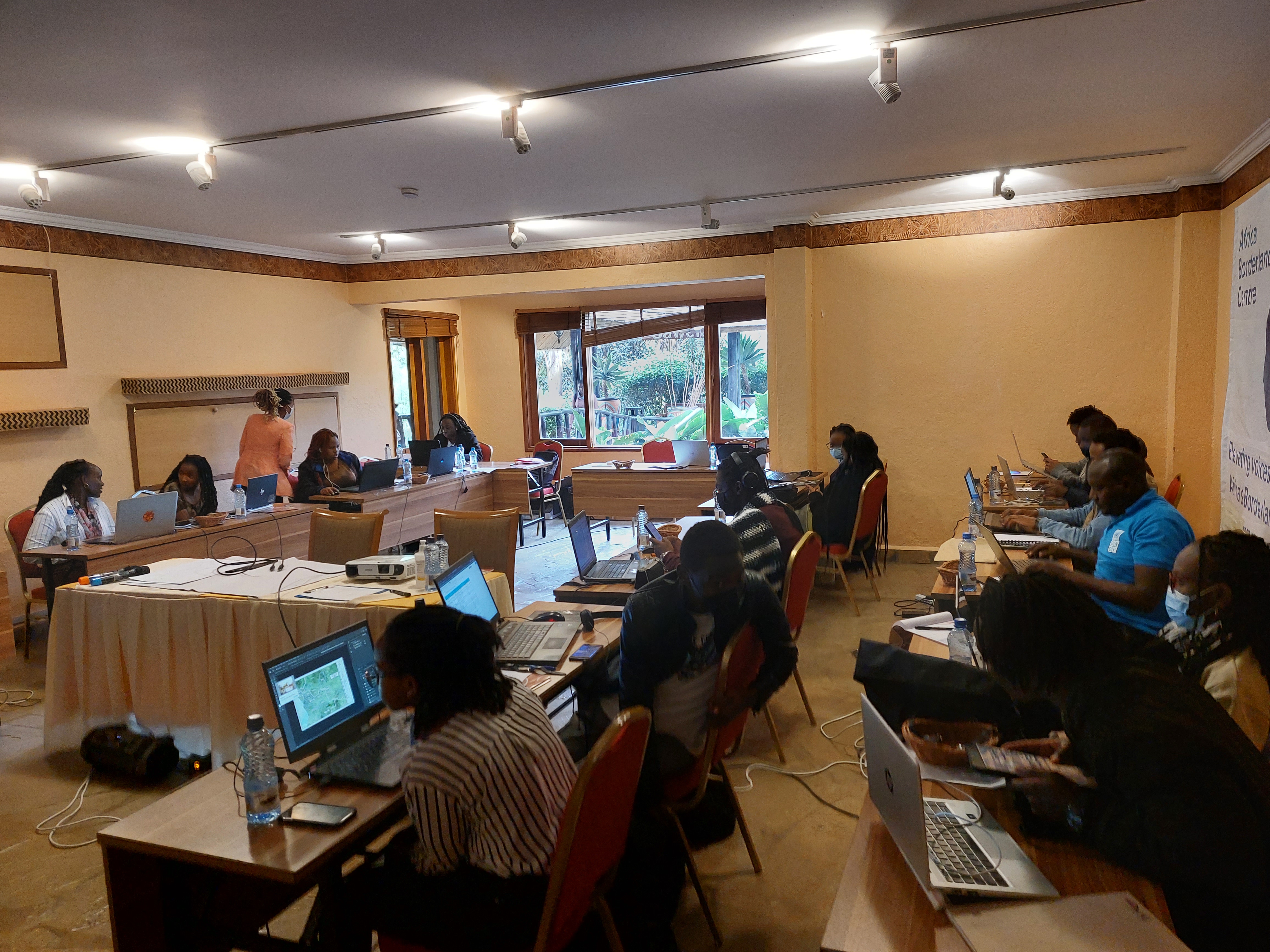Co-Creating Borderlands Data Solutions with Youths: UNDP Africa Borderland Centre's Experience
March 31, 2023

Participants at the ABC Illustration Map Bootcamp
The cornerstone on which the work of the Africa Borderlands Centre (ABC) lies is the appreciation of the creativity, ingenuity and potential possessed by communities in the border regions of Africa. The same principles guide the everyday work of the Centre, giving the ABC room to introspect and ask; what creative solutions can we employ to ensure results delivery in a timely and cost-effective manner?
This question presented itself to the ABC when developing its recently launched data portal and the Africa Borderlands Encyclopaedia. The portal is an ambitious quest to centrally collate and enhance access to authoritative socio-economic data on Africa's borderlands. Data in its raw and unprocessed form presents challenges in interpretation and hence limitations in its application and use. To ensure that the borderlands data is easy to interpret, elicits user interest and provides a snapshot of the varied borderlands necessary to trigger an informed decision process, the ABC adopted illustration maps that help simplify vast data volumes. The illustrations complement the available quantitative data and allow for accessibility and inclusivity in knowledge sharing.
"The output in the form of Illustrative Borderland Maps is a sure way to condense and visualize expansive data that would otherwise take volumes of books in prose. We are elated to help magnify the voices of our Africa Borderland Communities".Christine Mbai, Lecturer, University of Nairobi
Covid-19-related challenges interfered with productivity and completion of the illustrative maps component of the Encyclopedia. Solving this problem required initiating a mutually beneficial engagement with a group of creatives, and an illustration Maps Bootcamp was proposed targeting university students. On 11 July 2022, 15 Architecture and Graphic Design students from the University of Nairobi made their way to Naivasha with great enthusiasm and excitement to learn new skills during a five days' workshop facilitated by international and local-based illustration experts. The Bootcamp provided hands-on skills, guidance, peer learning opportunities and interactive forum for participants to develop illustrative maps for 109 border pairs on the continent.
When the Bootcamp came to an end, the students delivered illustration maps of excellent quality. This capacity-building exercise resulted in the Centre achieving its objective of service delivery on time and within budget. The more outstanding achievement was, however, the revived sense of purpose by the participants to use their creativity to solve developmental challenges.
"The Bootcamp was a well-timed reminder of how we could channel our creative sides to do work greater than ourselves and a nudge towards thinking keenly about how we'd want to assist the less fortunate going forward as we pursue our different careers."Leon Irauka, Architecture student, University of Nairobi
The Bootcamp provided an opportunity to reflect on the state of the creative sector in Kenya. Anecdotal evidence shows that women's participation in the youthful creative economy sector is limited, with many women in the industry providing operations support to their male counterparts leading in technical roles. With the intentionality that no one shall be left behind, 10 out of the 15 Bootcamp participants were women who gained technical skills that will propel them into boundless opportunities in the architecture and design sector. Celeste Wamiru, the Bootcamp's co-instructor, is the first female editorial cartoonist in East Africa who, through cartoons and illustrations, communicates the changes and impacts that need to be made or are being made in our communities. Celeste's impartation of her skills and lessons as a female creative provided the young women in the room with aspirations to progress in the field.
In an ever-evolving and digitized world, there is a need to equip creatives with digital skills that will enable them to reap the rewards of the technological age. The instructors presented two illustration approaches to the students; combining traditional and digital illustration. The other option was to produce the images digitally solely. The students initially chose the latter. However, at the end of the second day, it was evident that this was a steep learning curve, and the instructors adjusted to accommodate this. The students appreciated intergenerational engagement as a vital part of the learning process. Muthumbi Francis described the Bootcamp as a glimpse into the professional world where "seniors and colleagues all worked together through the Bootcamp, teaching and learning from one another".
Creatives commonly express that there is a lack of recognition for their work. Often, , acknowledging the value of creative work is primarily a promise of exposure rather than monetary compensation. Ensuring that the work produced by creatives is dignified and well-renumerated is a step towards achieving decent work for all.
In conclusion, the Centre's involvement with creative youth highlights the creative industry's significant impact on the development sector. Key factors enabling this impact include capacity-building, transfer of skills, access to finance, promoting women's inclusion, and ensuring digital literacy. These requirements are crucial to unlocking the full potential of the creative sector in driving meaningful change in the borderlands of Africa.

 Locations
Locations